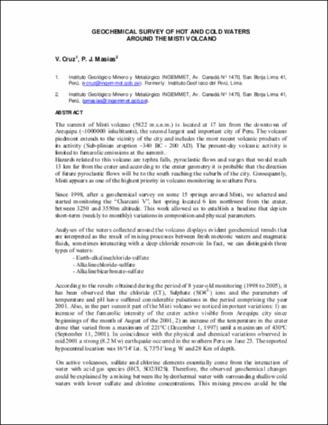Please use this identifier to cite or link to this item:
https://hdl.handle.net/20.500.12544/1801Files in This Item:
| File | Description | Size | Format | |
|---|---|---|---|---|
| Cruz-Geochemical_survey_hot_and_cold_waters...Misti_volcano.pdf | Abstract presentado en congreso | 54.13 kB | Adobe PDF | View/Open |
This item is licensed under a Creative Commons License












